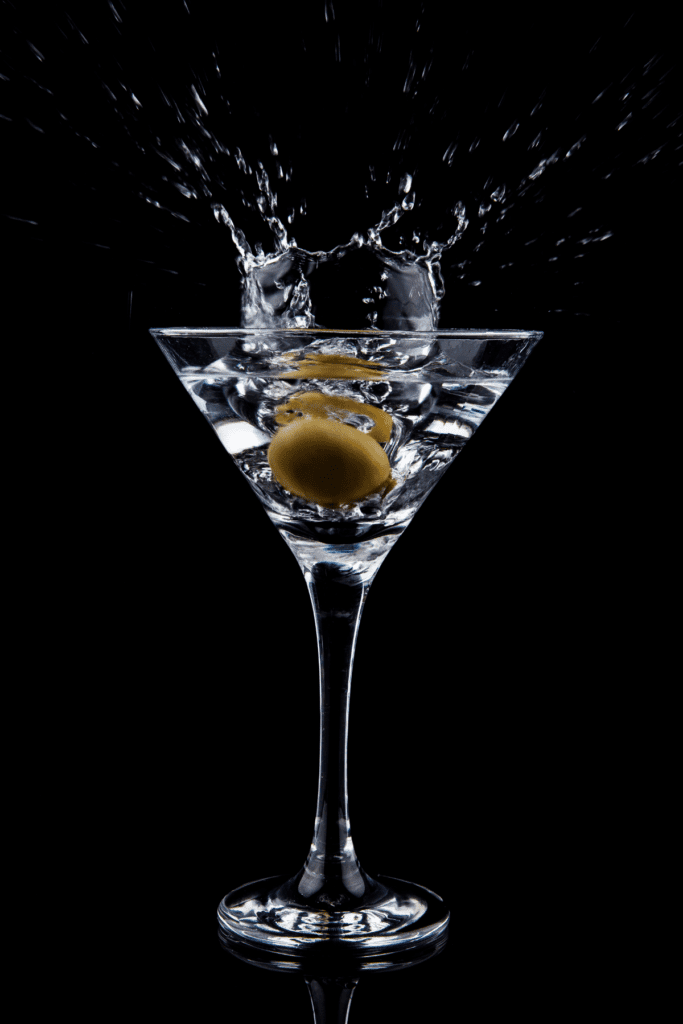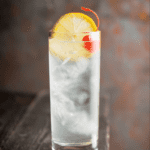
Introducing: The Classic Martini
Mention the word “martini” and most people immediately think of James Bond. However, this classic cocktail has been around since the late 1800s. It is still a favorite among connoisseurs for its sophisticated flavor and iconic elegance.
The true beauty of a martini lies in its simplicity. All you need to make one are two ingredients – gin or vodka and dry vermouth. But there’s so much more to it than just mixing these two together!
Choosing Your Ingredients
When making a martini, be sure to choose quality ingredients that complement each other well. Gin has an herbal taste with strong juniper notes, while vermouth adds sweetness and complexity with aromatics such as wormwood, chamomile, cinnamon, orange peel extract and cloves.
If you’re not sure which type of gin or vermouth works best with your palate, experiment by trying different brands until you find one that suits your tastes.
Selecting A Glass
A martini should always be served in a chilled glass – either straight up (without ice) or on-the-rocks (with ice). If pouring over rocks, use large cubes as they melt slower than smaller ones.
For extra style points , opt for an iconic V – shaped martini glass . This will help keep all the ingredients cold longer , allowing them to mix together without diluting too quickly .
Stirring Up Perfection
Once everything is ready , it’s time to begin stirring ! Start by adding some cracked ice into the shaker then pour in three parts gin (or vodka if preferred ) followed by one part dry vermouth . Put on the lid securely then start shaking vigorously for about 20 seconds . This helps combine all flavors evenly before serving .
For those who prefer their drinks stirred instead of shaken , simply place both liquids into an empty glass filled with lots of freshly cracked ice . Using either a cocktail spoon or fork , stir gently but continuously until everything is well blended – this should take no more than 30 seconds at most !
Garnishing With Style
The finishing touches can really add something special to your drink! Olives are often used as garnish because they provide texture contrast against smooth liquid; however citrus fruits like lemons or oranges work too depending on what else you put in your drink beforehand.
Choose whatever looks good visually but also consider how scents affect taste when deciding which garnishes would go well with certain types of spirits/vermouths combinations.. Experiment away until satisfied!
Martini
Ingredients
- Ingredients:
- -2.5 ounces 75 ml gin or vodka
- -0.5 ounce 15 ml dry vermouth
- -1 dash of orange bitters optional
- -Garnish: Lemon twist or an olive
Instructions
- Instructions:
- Fill a mixing glass with ice cubes.
- Add the gin and vermouth to the glass and stir well for about 30 seconds until chilled.
- Strain into a martini glass, add the bitters if desired, and garnish with a lemon twist or olive as desired.
Glassware
A martini glass is the typical cocktail glass used for a classic martini. This type of glass has a tall, V-shaped bowl and long stem.
Mojito: The traditional Mojito is served in a highball or Collins glass, which features a taller shape with straight sides.
Whiskey Sour: Traditionally, whiskey sour cocktails are served in an old-fashioned rocks glass, also known as an “on the rocks” glass. It’s typically short and wide with thick walls to help keep ice from melting too quickly.
Margarita: Margaritas are usually served in either an old-fashioned rocks or margarita glasses that have wide rims for salting the rim of the drink if desired.
Flavors
The classic Martini is a timeless and sophisticated cocktail. It’s flavor profile is composed of two main ingredients: gin and vermouth. Gin has a slightly herbal taste, often with notes of juniper, lemon, or pine.
The vermouth brings in sweet aromas with hints of herbs like thyme, basil and rosemary as well as flavors like cloves, caramel and cinnamon.
Shaken or stirred over ice into a chilled glass the Classic Martini offers an incredibly balanced flavor that combines the botanical notes from the gin with the sweetness of the vermouth. Finally it can be garnished with olives or citrus peel to add even more depth to its complex aroma.





